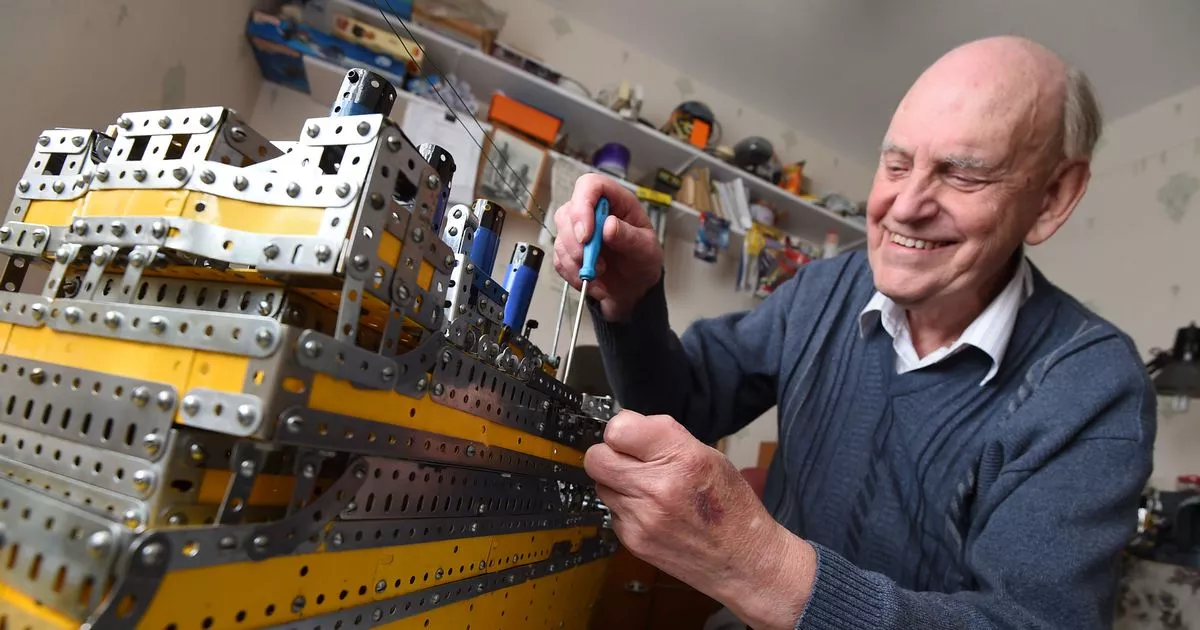Merseyside has made huge contributions to Britain throughout its long history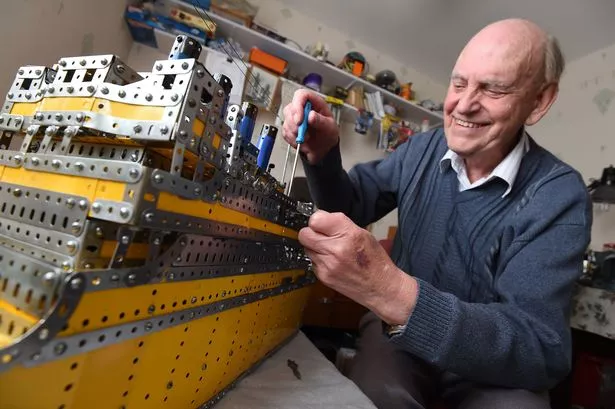 85 year old Bill Gardiner, who has been building Meccano since he was a young boy
85 year old Bill Gardiner, who has been building Meccano since he was a young boy
Liverpool has come a long way from its humble beginnings as a tiny settlement of just seven streets at its foundation in 1207. From music and the arts to the study of science, the city has made huge contributions to Britain throughout its long history.
Liverpool was the first city outside London to be awarded blue plaques by English Heritage in recognition of the “significant contribution made by its sons and daughters in all walks of life”.
John Lennon and World War I poet Wilfred Owen were among 15 famous figures to be honoured with the Blue Plaques when they were unveiled in 1999. Other notable figures were toymaker Frank Hornby, trade unionist Bessie Bradock, and the founder of the White Star Line, Henry Ishmay.
Here are eight game-changers for modern society that you might not know find their origins right here in Liverpool.
Lifeboat stations
The first “boat and station for saving lives” is believed to have been in operation at Formby Point as early as 1776. According to the Formby Civic Society, a footnote to A Chart of the Harbour of Liverpool by P. P. Burdett recorded: “On the strand about a mile below Formby Lower Land Mark there is a boathouse, and a boat kept ready to save lives from vessels forced on shore on that coast, and a guinea, or more, reward is paid by the Corporation for every human life that is saved by means of this boat, etc.”
The exact date of the creation of Formby station remains uncertain, but is believed to have been between 1771 and 1776. It was the starting point of a number of daring rescue missions, including an ill-fated expedition in January 1836 which saw five crew members drown after their boat capsized while trying to help a ship that had run aground.
In 1894, the RNLI took over the station and it continued to be used until 1918. The building was then used as a café before finally closing in 1935.
Free school milk
The earliest days of free school milk can be traced be back to Liverpool in the years after WWI. Trailblazing Liverpool-born teacher Jessie Reid Crosbie introduced a free milk scheme at her school, believed to be among the first of such schemes in the UK.
Compulsory education was first introduced via the Elementary Education Act in the 1870s, but widespread poverty meant thousands of children went to school hungry. In 1906, the new Education Act allowed local authorities to provide school meals.
It was not until 1944 that the National School Meals Policy was passed, requiring all local authorities to provide nutritious meals to children. The free milk scheme was introduced two years later.
Football nets
John Alexander Brodie was one of the key engineers who led the design of the Mersey Tunnel under the River Mersey. But he was also the creator of a piece of equipment that shaped the world of football – the humble goal net.
Brodie, a keen sportsman himself, counted his creation of the goal net in 1889 as his proudest achievement. The nets were an immediate success, and the FA required all goal posts to be fitted with nets from 1891 onwards.
Meccano
Meccano, a well-known brand of model construction sets, once dominated the toy market, filling the Christmas stockings of excited young boys from the 1930s to 1950s. Invented by Liverpool businessman Frank Hornby, the massive success of the brand made him a millionaire.
Hornby entered politics in 1931 when he was elected as a Conservative MP for Everton. He died in 1936, aged 73, leaving behind a legacy which still persists today, as Meccano enthusiasts all over the world continue to expand their collections. The International Society of Meccanomen was founded in 1989, and now boasts around 600 members in more than 30 countries.
The Meccano brand still exists today, and is owned by Canadian toy company Spin Master Ltd.
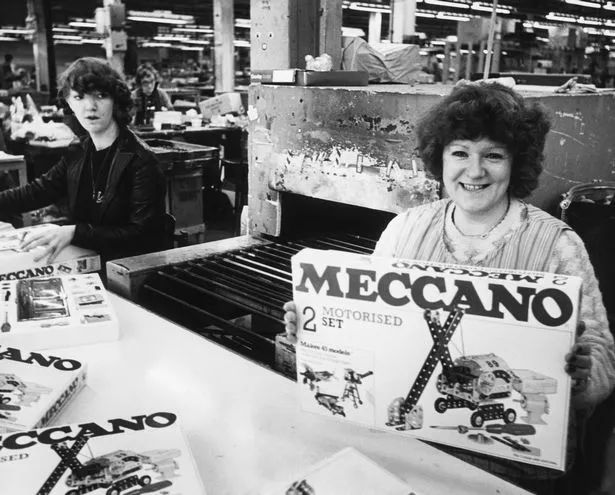 Meccano Factory, December 1979(Image: Mirrorpix)Santa’s Grottos
Meccano Factory, December 1979(Image: Mirrorpix)Santa’s Grottos
The world’s first Santa’s grotto is believed to have been in the Lewis’s Department Store on Lime Street in 1879. Originally known as ‘Christmas Fairyland’, it was packed with festive decorations and elves. Soon, the idea spread, and now Santa’s Grottos have become synonymous with Christmas all over the world.
The Lewis’s grotto was so beloved that it was decided it would continue following the closure of the shop in 2010. It was relocated to Rapid Hardware in the former George Henry Lee building on Church Street, where it remained until 2017 when Rapid closed. It then moved to St John’s shopping centre.
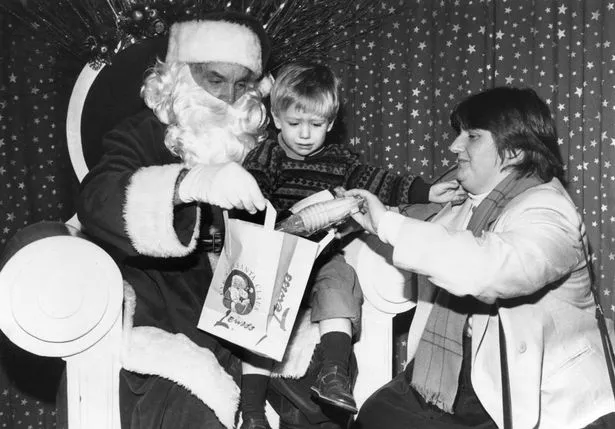 The first meeting with Santa at Lewis’s department store in Liverpool, December 1992(Image: Mirrorpix)Schools for the blind
The first meeting with Santa at Lewis’s department store in Liverpool, December 1992(Image: Mirrorpix)Schools for the blind
The Royal School for the Blind, the first specialist school of its kind in the UK, was founded in Liverpool in 1791. It was established as The Liverpool School for the Indigent Blind by human rights campaigner and abolitionist Edward Rushton, who was blind himself due to ophthalmia, which he caught while serving onboard a slave ship.
The school occupied several different sites during his 227-year history. It was first located in two lodging houses on Commutation Row, then moved to nearby London Road into a purpose built school building in 1800.
The school was displaced as a result of extension of Lime Street Station in 1851 and moved to Hardman Street. A children’s school building was constructed in Wavertree in 1898, where it remains today.
Lending libraries
England’s first subscription library service was housed in the beautiful Lyceum Building, which still stands at the bottom of Bold Street today – now an indoor crazy golf course.
The library service began as a small book club in 1757, in the house of a local teacher William Everard. The Liverpool Library was formally established the following year, and the large book collection was moved from Everard’s house to various places around Liverpool.
As the collection grew, it was decided a proper library building was needed, and so construction began on The Lyceum in 1800. It was completed in 1802, and continued to operate as a library until 1952.
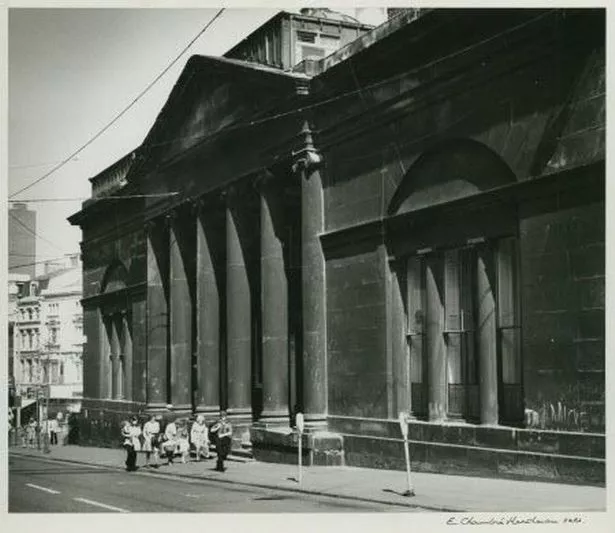 The Lyceum, Bold Street, Liverpool. The architect of building was Thomas Harrison (1744-1829)(Image: ©National Trust Images/Edward Chambré Hardman Collection)Tracking shots
The Lyceum, Bold Street, Liverpool. The architect of building was Thomas Harrison (1744-1829)(Image: ©National Trust Images/Edward Chambré Hardman Collection)Tracking shots
A tracking shot is a now-common filming technique in which the camera moves alongside whatever is being recorded, such as an actor walking. The first ever tracking shot is believed to have been taken in Liverpool in 1897 by the famous French filmmakers, Auguste and Louis Lumière. The shot was taken from the Liverpool Overhead Railway, which operated along the Liverpool Docks from 1893 to 1956.
